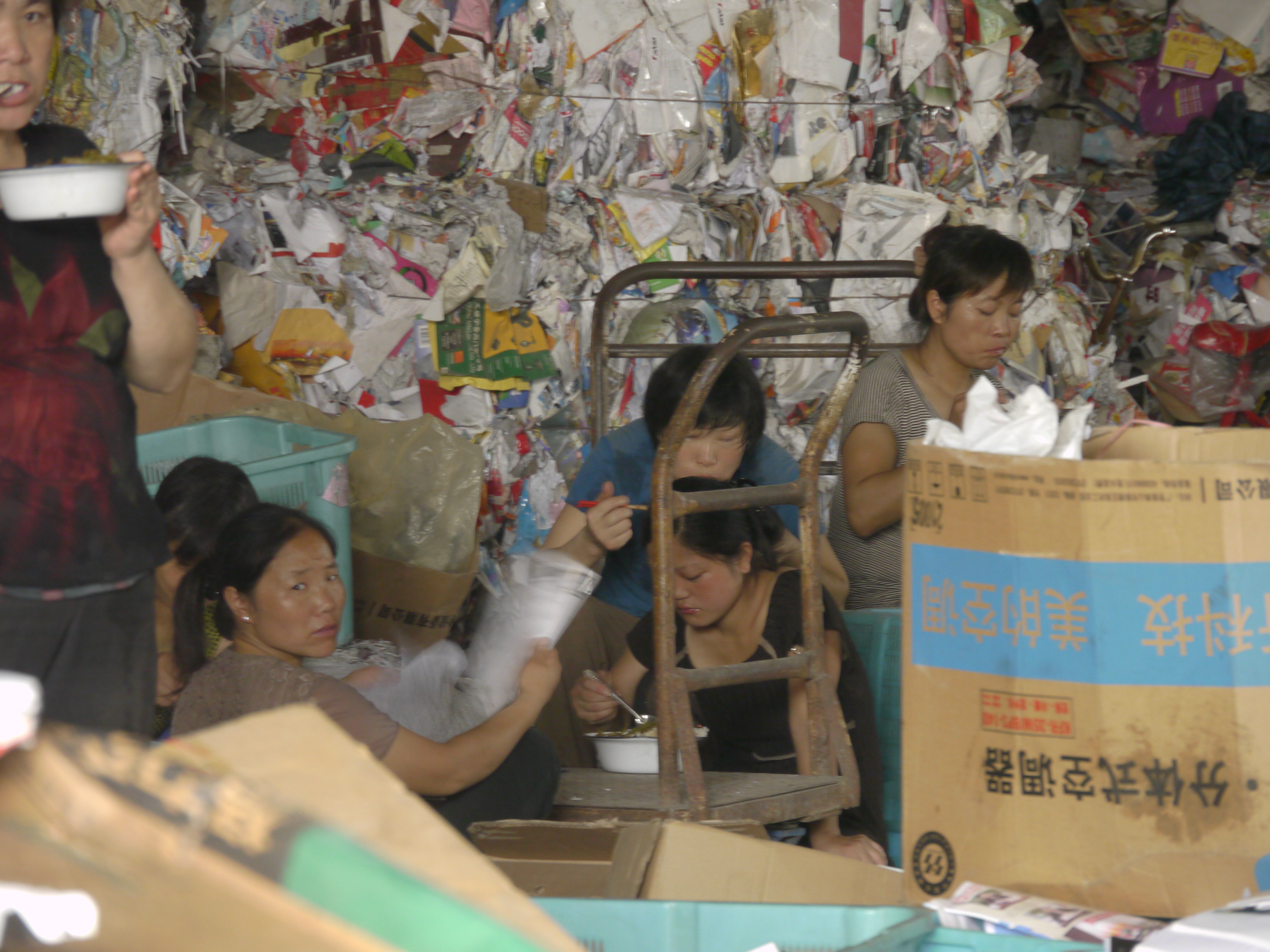As part of the Transit-Labour Shanghai platform, I undertook a visit with Angela Melitopoulos and Maurizio Lazzarato to the Guijing migrant village (归泾村) adjacent to the Linzhao Xincun metro station in Pudong. During the week of our visit there were reports of the nighttime gating and locking of sixteen migrant villages in the southern suburbs of Beijing as part of an effort by the local authorities to reduce crime. Our walk into Guijing village did not reveal evidence of such hard borders. Nonetheless the variance from other parts of the city was immediately visible. The presence of spray painted mobile phone numbers on walls and houses, left by individuals and agencies advertising informal jobs and documentation for migrants, marked our entrance into a different urban terrain.

The Linzhao Xincun metro station sits on the new extension of Line 8 that opened in July 2009. Just three stops beyond the Yaohua Road station, one of the major stops serving the Expo, the new metro station has significantly affected the local economy. One sign of this is the throng of rickshaw drivers who wait at the exit, hopeful of finding a ride. More importantly, the metro provides rapid transport to the city's wealthier areas, where many of the migrants living near the station travel for work. The subway also brings with it a host of border devices, not least the fare of 12 RMB or more that one pays for the trip to the city centre - a cost beyond the means of many of the area's denizens. Added to this are the Expo-driven security measures introduced across the metro system, including baggage scans, closed circuit television and military guards.
A stroll into the village reveals something of the area's economy and labour patterns. Amid the muddy ponds, smouldering piles of rubbish and dwellings built beneath electric pylons, sit decommissioned shipping containers full of broken timber and used building materials. Further down the road are large hangars stacked with recycled paper and cardboard. Light trucks and pedalled carts ferry these materials into the area. A significant proportion of the local economy is linked into the informal patterns of waste collection that traverse Shanghai. The village is a site for the sorting and stockpiling of recyclable scrap that is collected by peddlers across the city. It is a place where waste becomes value and enters the global market of recycling not for environmental or moral reasons but for the subsistence it can offer.



We had travelled to the village to visit the New Citizen Life Center, a community centre established by Xintu, a Shanghai-based NGO (or non-profit organisation as rendered in Chinese to dispel any sense of opposition to government) that supports migrants through the provision of health resources, research and capacity building. The Centre's Director described the organisation as a bridge between government and migrants. She explained that the Centre provides a public service platform for the "human development" of residents in the migrant community. With an emphasis on reproductive health, prevention of domestic violence and women's safety and self-protection, the aim is to provide the "new citizens" with healthy living information, city life adaptation skills and increased involvement in community affairs.

To enter the New Citizen Life Center is to enter the space of the biopolitical. On the day of our visit small children were playing in a brightly coloured room with their mothers watching on. In an adjacent room, volunteers from the NGO Stepping Stones China were teaching older migrant children the names of body parts in English: finger, hand and elbow. The Director explained to us that the migrants in the village had poor access to health and education services due to China's hukou or household registration system. She indicated that the Centre was active in the distribution of contraceptive pills and had assisted in the recruitment of 100 migrant women to work as nighttime cleaners at the Shanghai Expo. Here was a place where borders traverse the body and the provision of health is inseparable from the supply of labour.

In China the NGO sector works closely with government and commercial interests. In the case of New Citizen Life Centre, funding comes from Glaxo Smith Kline China. The Glaxo Smith Kline Corporate Responsibility Report 2009 describes the initiative as a "local program" funded at GBP 250,000 over three years. This is part of what Pun Ngai calls the "reorganised moralism" of transnational corporations in China. Such practices help to improve the public image of Glaxo Smith Kline and increase the value of its products in a global consumer environment highly sensitive to issues of health and labour. They also help to offset the effects of activist campaigns, such as those concerning the price of antiretrovirals in Africa, and create new markets for the firm, for instance among populations like that in Guijing village.
We see here the penetration of global capital into Chinese society in the form of providing "good" governance in relation to health and labour practices. This creates the impression that transnational capital is protecting the rights of migrants from a despotic state that denies these same rights. On the ground, the situation is more complex. Governmental, nongovernmental and corporate actors form part of a larger assemblage in which migrants themselves are actors. The desires and movements of Guijing village's population cannot be wholly constrained by the sovereign and governmental powers that come to bear upon them. To traverse the multiple borders that cross this site is to discern a subjectivity-in-the-making, to follow the traces of conflictual processes that drive the current transition not only in China but across wider global terrains.













